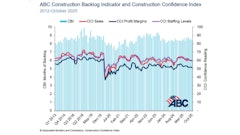
This is the second part of a two-part article dealing with the most common provisions in construction contracts and the important aspects of each provision. As a reminder, the purpose of a construction contract is risk management and, more particularly, risk shifting to other parties involved in the project. The way in which these contract provisions are written and worded is of critical importance in making sure that the parties have accurately expressed their intentions and adequately protected themselves.
Part one of this article focused on payment clauses, termination clauses, force majeure provisions and warranty provisions. This second part of the article focuses on timing provisions, flow-down clauses and alternative dispute resolution provisions and will also examine some issues that arise in the context of a breach of the contract.
Timing provisions
An owner’s primary concern is usually when the project will be finished. This may cause the owner to try to include right timelines in contracts and to try to accelerate these timelines and speed up the progress of a project whenever possible. However, it is often difficult for contractors to operate under rigid owner-imposed deadlines, particularly finish trade subcontractors, who are the last to start, last to finish and whose start date is dependent upon the completion of the work by the contractors ahead of them. The key with any timing provision in a contract is therefore to manage expectations and be realistic in doing so. It is dangerous for a contractor to over promise and commit to an unrealistic timeline simply to secure the job. This may be sustainable in the short-term, but chances are that at some point the contractor will fall behind.
As a matter of general contract law, timing is not important unless the parties agree to make it important. Therefore, if timing is important in connection with a particular project, the contract should include a “time is of the essence” provision in the contract. Contractors should be wary of these clauses in prime contracts with owner,s and subcontractors should likewise be wary of these clauses in their contracts with general contractors because they place additional obligations on the contractors.
However, if all parties agree that timing is important and include a “time is of the essence clause,” it is good practice to include actual dates, durations, etc,. in the contract documents — as long as those projections are realistic. If this type of information is not included, the parties will be held to a “reasonableness” standard, which can be very broad and is usually determined by a third party (i.e., a judge or jury) after a dispute has arisen.
Flow-down provisions
Flow down clauses are found most often in subcontracts and apply the rights, remedies and/or responsibilities in the prime contract between the owner and contractor to the relationship between the contractor and the subcontractor.
The typical stand-by flow-down provision reads something like this: “Subcontractor is bound to general contractor to the same extent the general contractor is bound to the owner.” This imposes on every subcontractor the same responsibilities imposed on the general contractor. From a subcontractor’s perspective, this provision is far too broad. Taken literally, if the general contractor is required to build a skyscraper for the owner, then the subcontractor is required to build a skyscraper for the owner and is responsible for doing so. This is clearly not the intent of the parties and unnecessarily opens the door for potential disputes down the road.
A better provision might start out the same way but add the following qualifier at the end: “…with regard to the subcontractor’s scope of work as defined in the subcontract.” This limits the subcontractor’s responsibilities to the general contractor to the subcontractor’s particular scope of work, which makes sense and is likely in line with the parties’ intent.
Even better would be to include specific terms of the prime contract that apply to the subcontract, such as payment, claims, disputes, insurance, etc. In this type of provision, specificity is key, particularly from a subcontractor’s perspective.
Alternative dispute resolution provisions
A common question raised by many construction professionals is whether a project ever gets completed without going through at least some type of dispute resolution process. Unfortunately, because of the risky nature of the construction business and the number of parties typically involved in any given project, disputes do often arise. It is, therefore, common for many parties to include some type of alternative dispute resolution provision in their contracts to govern any disputes, in order to avoid the cost and time associated with traditional “courtroom” litigation.
There are two primary types of alternative dispute resolution: mediation and arbitration. Mediation is a more informal procedure where the parties seek assistance from a neutral third party (the mediator) to help them resolve their dispute. Arbitration is more formal and is similar to litigation, but the process moves much more quickly and the case is tried to a panel of arbitrators, not a judge or jury. Another significant difference between these two methods is their binding effect — an arbitration panel’s decision is binding, while a mediator will not make an actual decision on the merits of the dispute but will simply act as a go-between for the parties, often pointing out the strengths and weaknesses in each party’s position to attempt to get them to reach some reasonable compromise.
New AAA Rules Call Into Question Finality of Arbitration Awards
Parties can use a contract provision to make either or both of these types of alternative dispute resolution a mandatory means of resolving any dispute that arises under the contract.
A breach: now what?
Breaches can occur under even the most well-drafted contract, and it is important for construction professionals to know what to do in this situation.
As a starting point, the most commons breaches claimed by contractors are:
- Failure to pay the contract balance
- Failure to pay for additional work/issue change orders
- Damages due to owner delays which caused the contractor to incur additional overhead/labor costs (delay claims)
- Wrongful termination
The most common breaches claimed by owners are:
- Failure to complete construction with the time allotted by the contract
- Failure to construct the project in accordance with the plans and specifications (defective construction)
- Failure to substantially complete the project
What should a construction professional do if an owner has breached the contract or if an owner has asserted a breach against the contractor?
The first step is to look at the contract. Is there a provision that applies to or governs the issue? If so, what does it say? Then, do an honest and careful evaluation and assessment of whether a breach has actually occurred. If it has, consult with an attorney. If it has not but an owner has alleged a breach, consult with an attorney.
There are two situations in the life of a construction project when attorneys are most important — first, when the contract is being drafted and second, when there is an allegation of breach. If the contract is well-drafted on the front end, the contractor should be as protected as possible in the event of a breach. However, if a breach has occurred, it is dangerous and inadvisable for a contractor to attempt to work it out or negotiate with an owner or another contractor on its own, particularly if those entities or individuals are represented by an attorney. The last thing a contractor wants to do is relinquish any rights it may have in connection with a breach. An attorney can help a contractor identify its rights, remedies and options and can make dealing with a contract breach a little less painful.



















